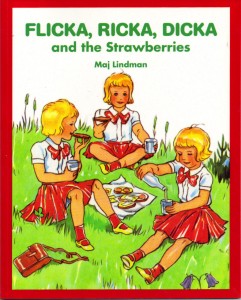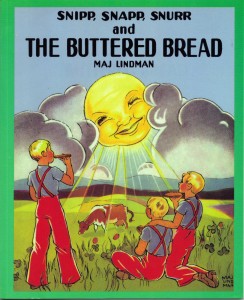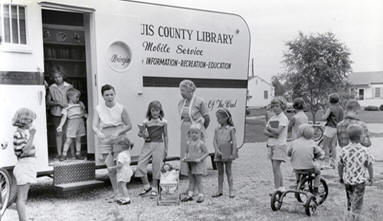The China Syndrome
July 18th, 2010 I have such mixed feelings about this beloved book, The Five Chinese Brothers. By today’s standards and perhaps by any standards, it promotes a racial stereotype (one that was acceptable in the 1950s). I didn’t know anything about that. I found the story and illustrations fascinating and absorbing. I always ran to find this book on the library shelf. I had to see those illustrations of the brother who could swallow the sea, the brother who could stretch his legs and the brother who could not be burned. The book is still in print, but on Amazon, I found an angry mother complaining that the book was violent (as well as stereotypical).
I have such mixed feelings about this beloved book, The Five Chinese Brothers. By today’s standards and perhaps by any standards, it promotes a racial stereotype (one that was acceptable in the 1950s). I didn’t know anything about that. I found the story and illustrations fascinating and absorbing. I always ran to find this book on the library shelf. I had to see those illustrations of the brother who could swallow the sea, the brother who could stretch his legs and the brother who could not be burned. The book is still in print, but on Amazon, I found an angry mother complaining that the book was violent (as well as stereotypical).
Earlier this year, when I was doing an event at the iconic Children’s Book World in L.A., store owner Sharon Hearn and I ended up talking about how much we loved The Five Chinese Brothers when we were young. Back then, young as I was, I didn’t think this was a true story, or that Chinese people were like this. The violence (a child dies, for goodness sakes, in a picture book, and authorities try to kill the brothers five times) didn’t bother me a whit. I thought it was a thumping good story and a very satisfying one. I don’t think it made me a bigot and it didn’t give me nightmares or make me a violent person. (I’m about as non-violent as they get.) It doesn’t translate today but it stimulated my imagination in a big way.
There was another popular Chinese-themed book of the day, again with what would be probably characterized as stereotypes today. The Story About Ping by Marjorie Flack, has another problem that might turn off parents and caregivers: Ping, the little duck, runs away because he’s afraid of getting a spanking. “Mommy, what’s a spanking?” kids today might ask. Spanking was an accepted punishment when I was growing up. That said, I was rarely spanked and maybe the few times I was were pretty half-hearted and painless. I’ve talked to people who grew up when I did who have said they were spanked in school. That was not in my experience at all. I never saw any physical punishment between adult and child at school. And my take on the “spanking” Ping was avoiding was that it was a gentle swat on the rear to say, “hurry up, now.”
 One thing I love about this book is the part where the little boy who lives on a boat in the Yangtze falls into the river and meets Ping. Young children living on boats had barrels tied around their waists so if they fell into the water, they’d float. The first water wings! On the other hand, I cringe at the yellow coloring and the fact that poor Ping almost ended up as dinner. Again, this book was fascinating to me as a young child. I always gobbled up anything new I could learn about the world. The fact that the world view was a little skewed didn’t do permanent damage, thank goodness. But I don’t think these books would -or should – fly today. Times change – thank goodness – but what mattered to me was the story and the imaginative flow of these tales.
One thing I love about this book is the part where the little boy who lives on a boat in the Yangtze falls into the river and meets Ping. Young children living on boats had barrels tied around their waists so if they fell into the water, they’d float. The first water wings! On the other hand, I cringe at the yellow coloring and the fact that poor Ping almost ended up as dinner. Again, this book was fascinating to me as a young child. I always gobbled up anything new I could learn about the world. The fact that the world view was a little skewed didn’t do permanent damage, thank goodness. But I don’t think these books would -or should – fly today. Times change – thank goodness – but what mattered to me was the story and the imaginative flow of these tales.








 I was jarred when it dawned on me a little while back that many children aren’t being taught nursery rhymes and fairy tales any more. Stories and rhymes that have been passed on for hundreds of years and that have cultural significance may, indeed, die. Things change, of course. But why?
I was jarred when it dawned on me a little while back that many children aren’t being taught nursery rhymes and fairy tales any more. Stories and rhymes that have been passed on for hundreds of years and that have cultural significance may, indeed, die. Things change, of course. But why? Our old Mother Goose book is the most worn of all my children’s book – evidence of how much we loved it with its vivid illustrations. You can see the pencil numberings my sister put in. She was frustrated by the book’s lack of an index and so she numbered the rhymes and then matched them up with the alphabetical list of rhymes, so she could easily find her favorites.
Our old Mother Goose book is the most worn of all my children’s book – evidence of how much we loved it with its vivid illustrations. You can see the pencil numberings my sister put in. She was frustrated by the book’s lack of an index and so she numbered the rhymes and then matched them up with the alphabetical list of rhymes, so she could easily find her favorites. 
 When I was growing up in the 50s and 60s, like most middle class families, we didn’t own a lot of books. I’m sure there were bookstores in downtown St. Louis, but in the suburbs, which were relatively new, they weren’t around yet. You could buy books at a department store, though. I remember being taken to Famous-Barr to get my Girl Scout Handbook. Department stores had everything back then – even bakeries and household goods such as soap. The bookstore there was somewhat limited but they sold Nancy Drew and popular series. Let’s face it, there weren’t as many people back then and there weren’t as many books. So … we went to the library.
When I was growing up in the 50s and 60s, like most middle class families, we didn’t own a lot of books. I’m sure there were bookstores in downtown St. Louis, but in the suburbs, which were relatively new, they weren’t around yet. You could buy books at a department store, though. I remember being taken to Famous-Barr to get my Girl Scout Handbook. Department stores had everything back then – even bakeries and household goods such as soap. The bookstore there was somewhat limited but they sold Nancy Drew and popular series. Let’s face it, there weren’t as many people back then and there weren’t as many books. So … we went to the library.
 The arrival of summer brings back so many wonderful childhood memories: long days of playing in the yard with friends, playing games inside the house with friends, swimming, roller skating, jump rope, hopscotch, jacks,walking to the movies, and reading! I read all year, but there was even more time for books in the summer. My whole family read in our respective beds every night – I remember calling out to my parents’ bedroom and spelling a word so they would tell me what it was.
The arrival of summer brings back so many wonderful childhood memories: long days of playing in the yard with friends, playing games inside the house with friends, swimming, roller skating, jump rope, hopscotch, jacks,walking to the movies, and reading! I read all year, but there was even more time for books in the summer. My whole family read in our respective beds every night – I remember calling out to my parents’ bedroom and spelling a word so they would tell me what it was.
 Facebook
Facebook Twitter
Twitter